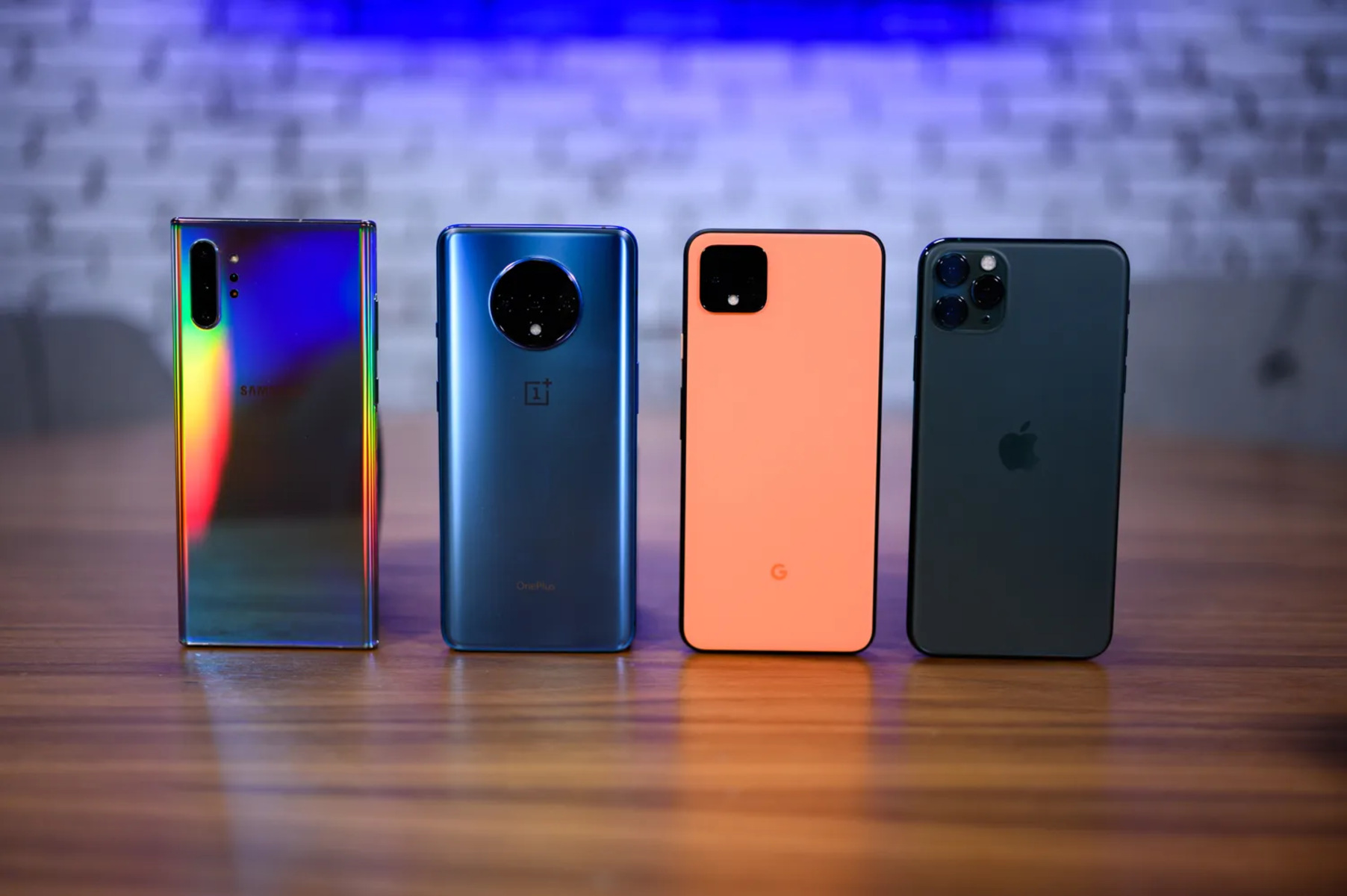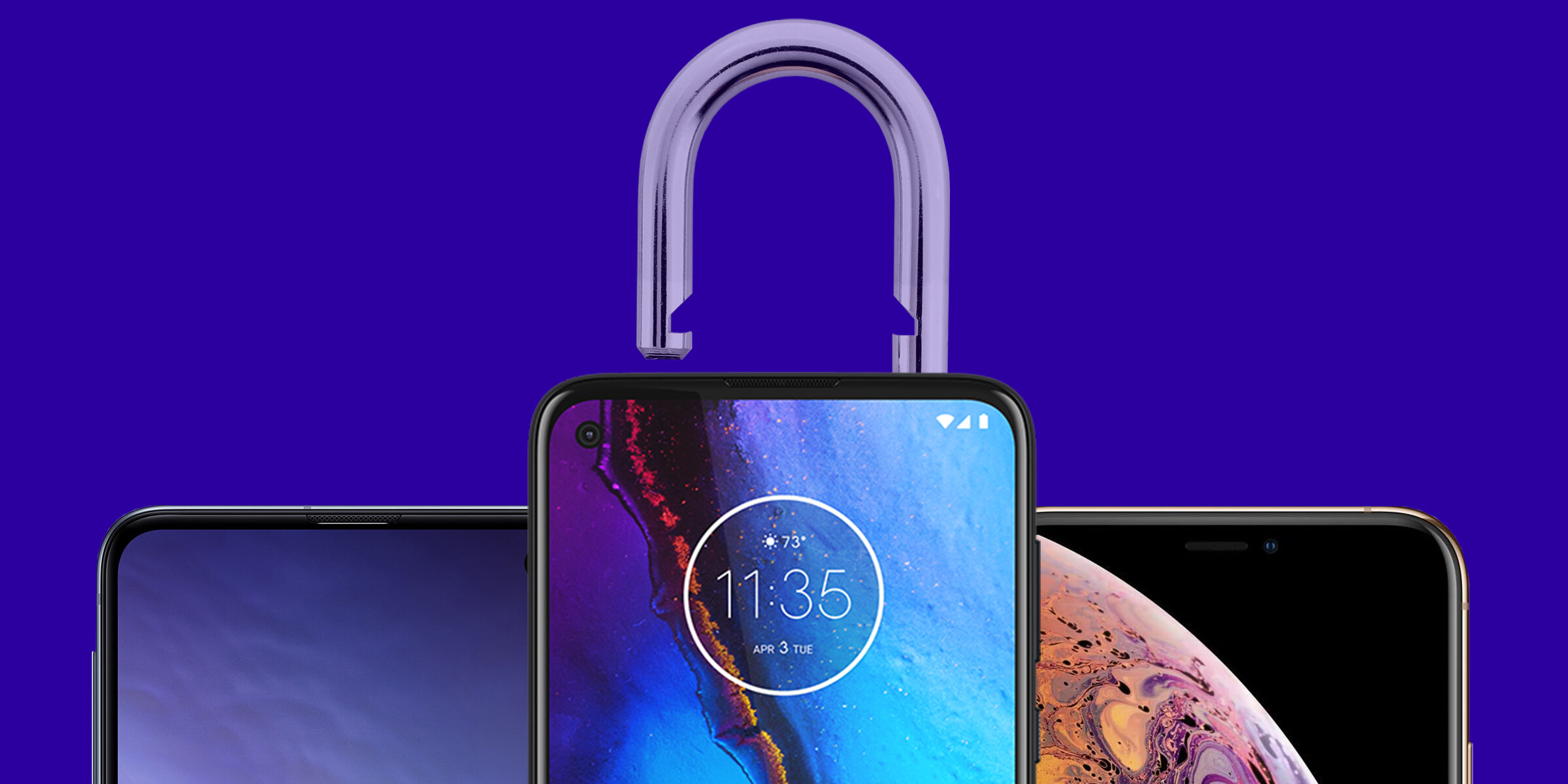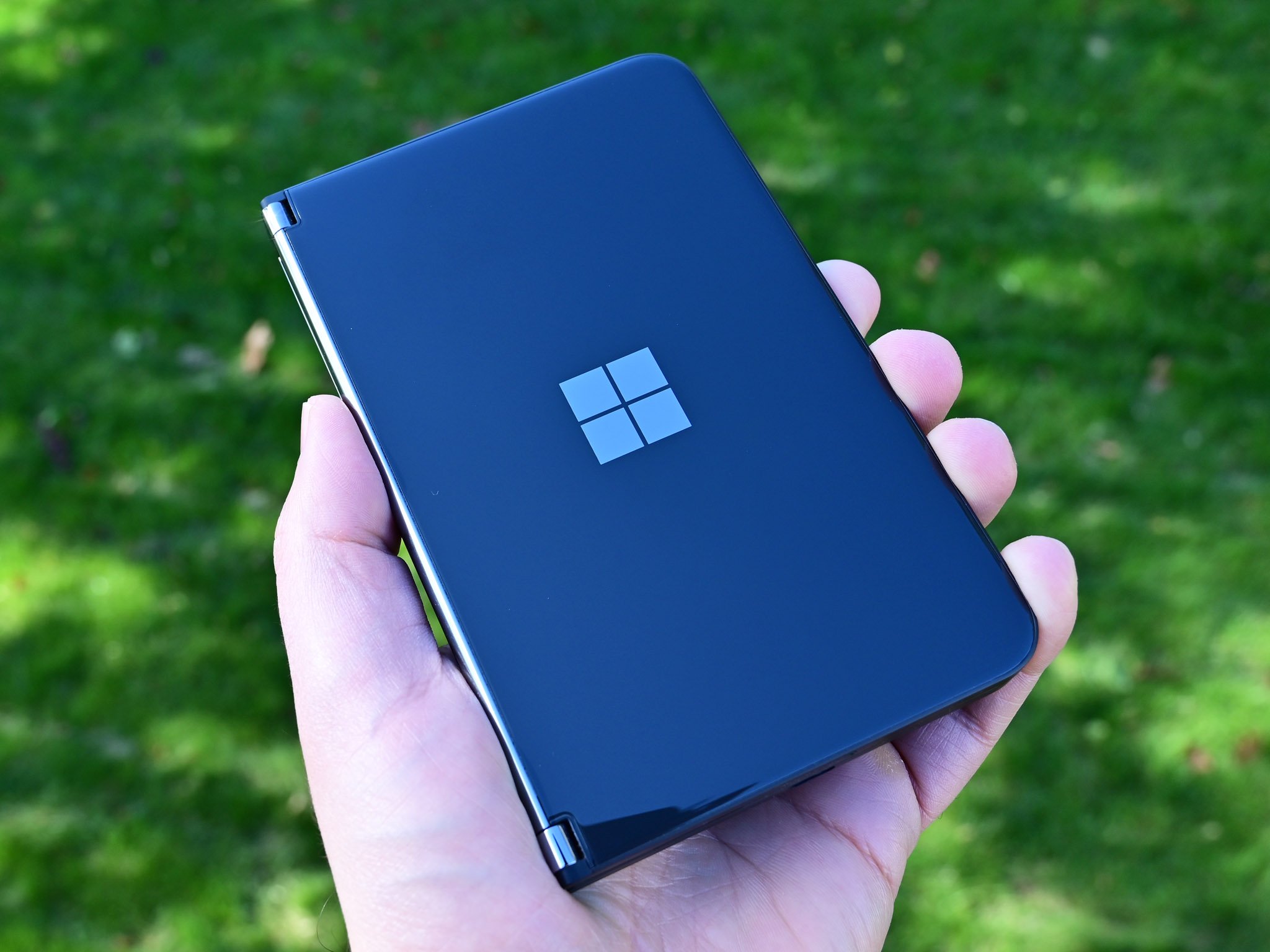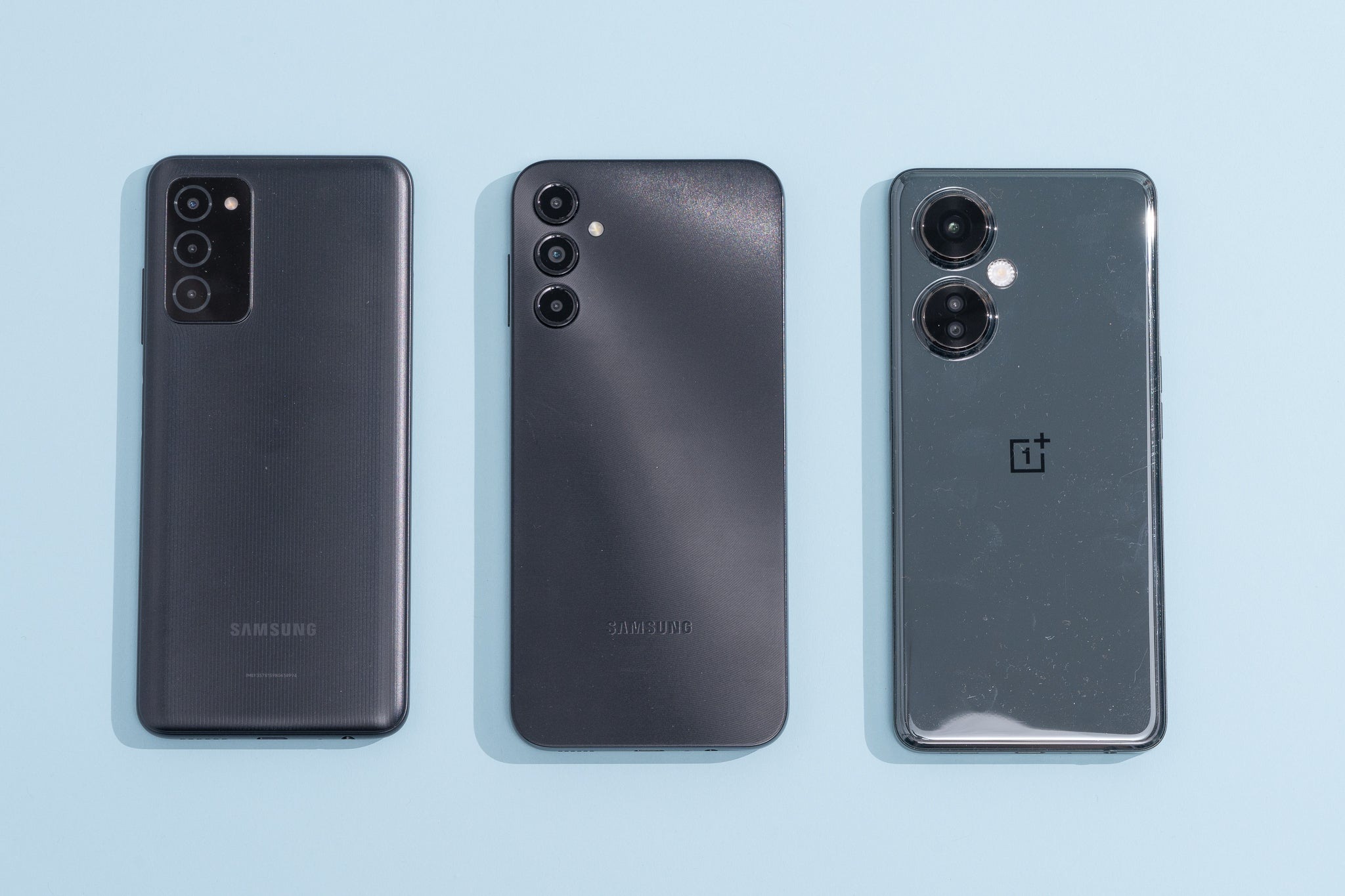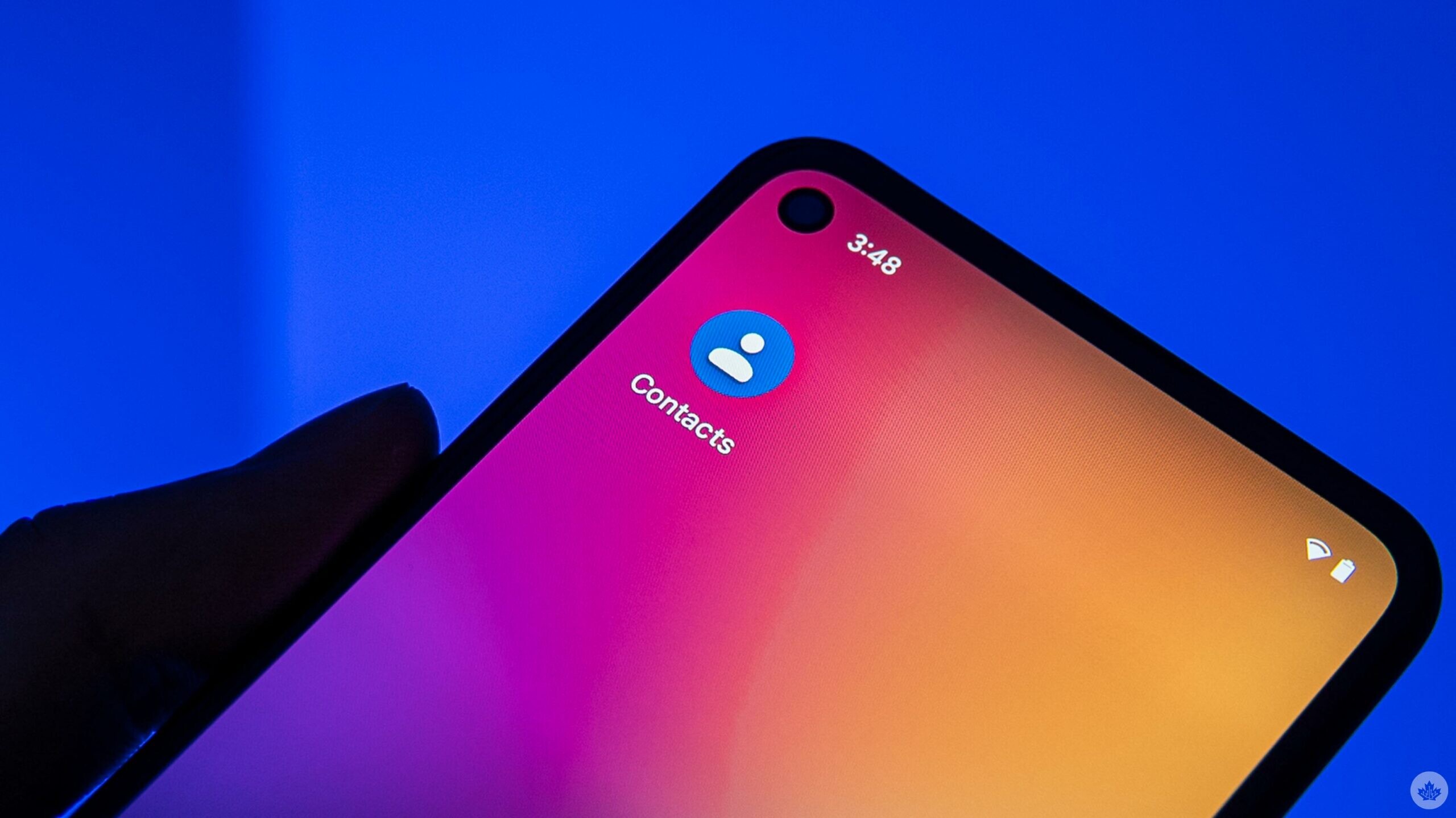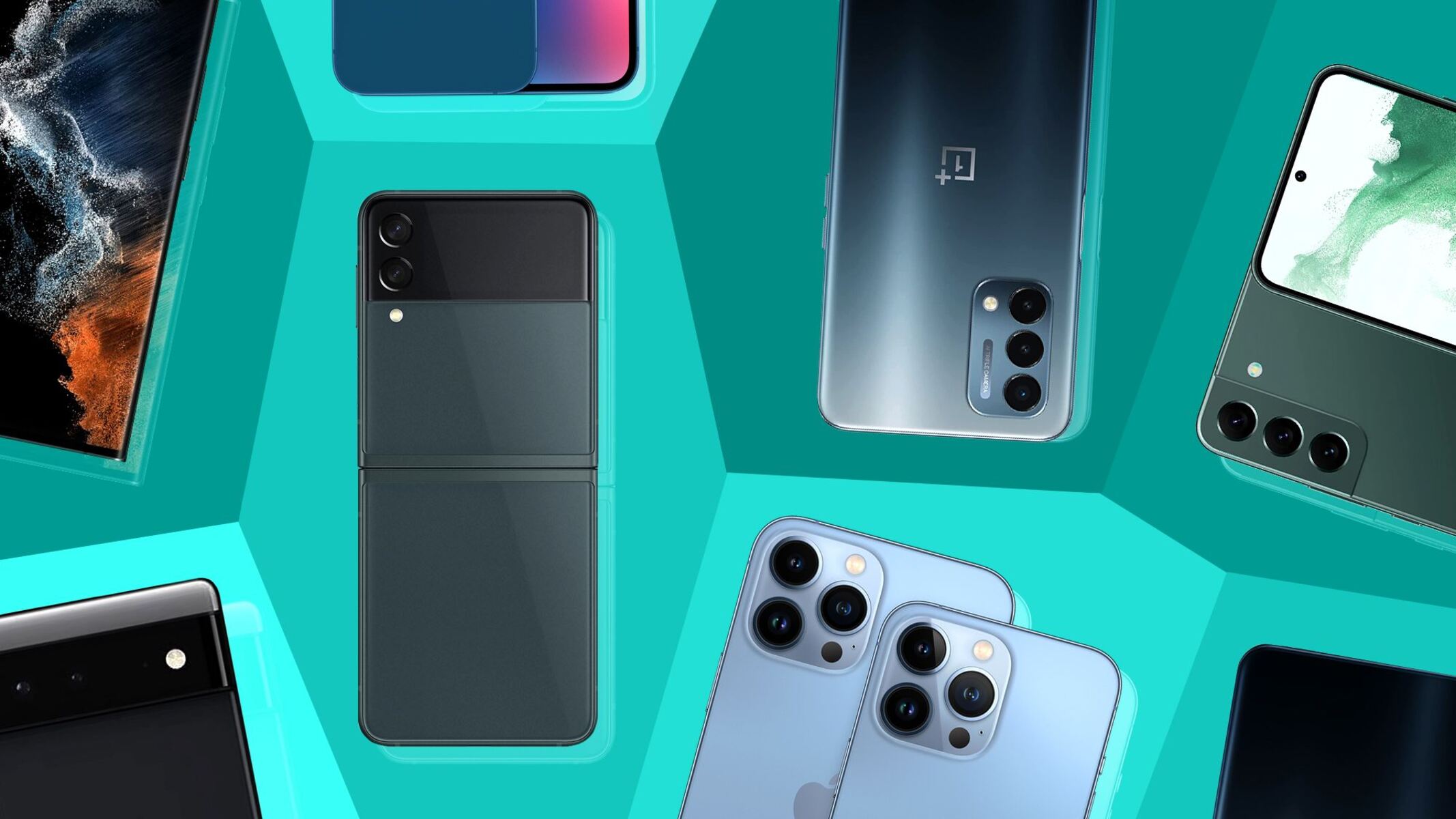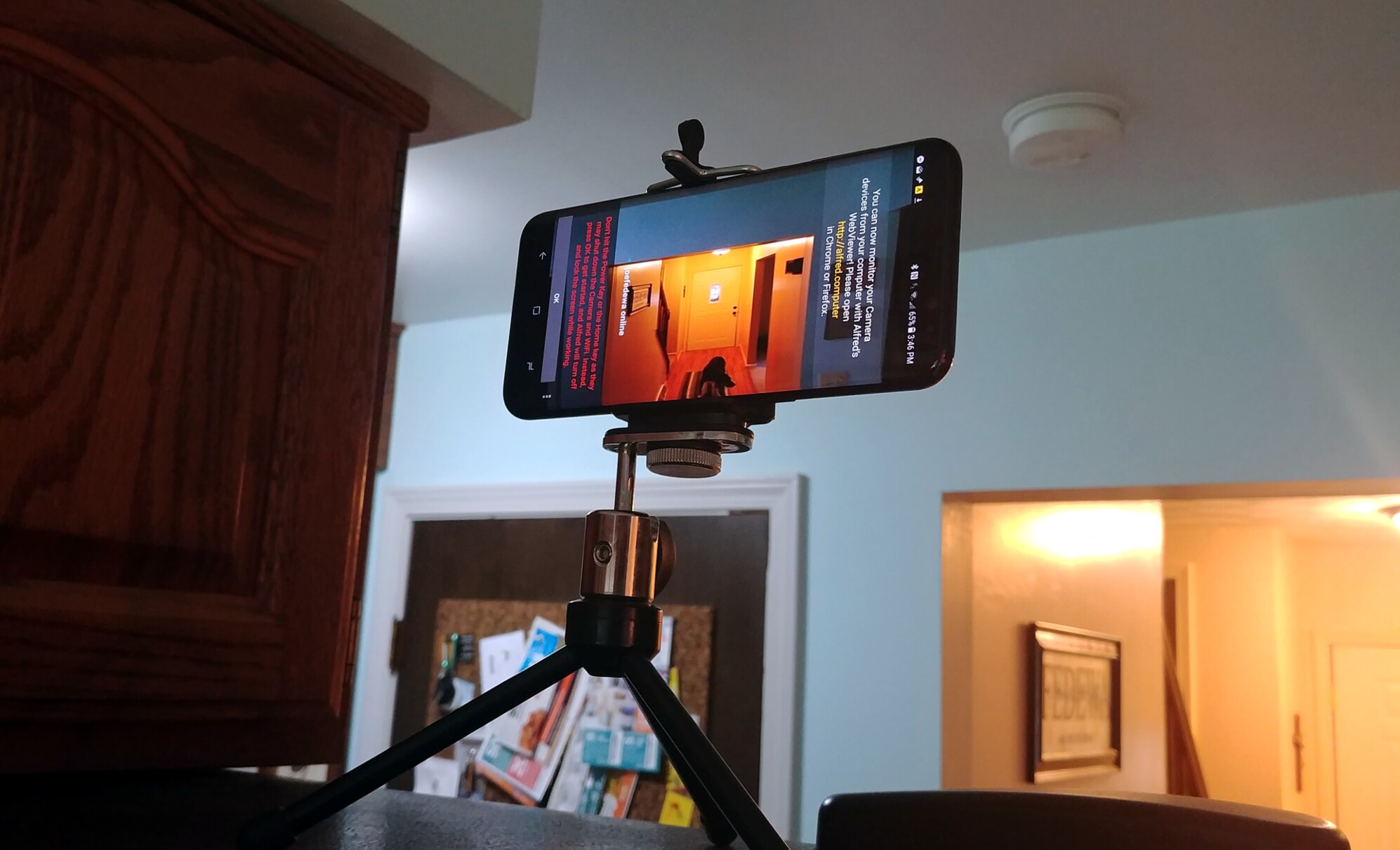Introduction
Choosing a smartphone can be a daunting task with the myriad of options available in the market today. From budget-friendly options to high-end flagship devices, the choices can seem overwhelming. However, by considering a few key factors, you can make an informed decision that meets your needs and preferences.
A smartphone has become an essential part of our daily lives, serving as our communication device, entertainment center, and personal assistant. Whether you’re a tech enthusiast or a casual user, finding the right smartphone can greatly enhance your digital experience.
Before delving into the specific features and specifications, it is important to establish a budget. Determining how much you are willing to spend will help narrow down the options and prevent overspending. Once the budget is set, it’s time to consider the operating system.
The two major operating systems in the smartphone market are iOS and Android. iOS, developed by Apple, is known for its seamless integration and user-friendly interface. Android, on the other hand, offers a wider range of device options and customization capabilities. Choosing the right operating system depends on your personal preference and familiarity.
Next, consider the display size and resolution. A larger display offers a more immersive viewing experience, especially for multimedia consumption and gaming. However, it may also make the device less portable and harder to operate with one hand. The resolution determines the clarity and sharpness of the content displayed, with higher resolution screens providing crisper images and text.
Another important consideration is the processor and RAM. The processor is the “brain” of the smartphone, responsible for its overall performance and speed. A powerful processor ensures smooth multitasking, faster app loading times, and efficient gaming capabilities. RAM, or random-access memory, determines the device’s ability to handle multiple tasks simultaneously. Opt for a smartphone with ample RAM to avoid lag and slowdowns.
Battery life is a crucial factor to consider, especially for heavy smartphone users. Look for a device with a long-lasting battery that can keep up with your usage throughout the day. Additionally, consider the availability of fast charging options to quickly top up the battery when needed.
Camera quality has become a deciding factor for many when choosing a smartphone. Whether you’re a photography enthusiast or simply enjoy capturing memorable moments, a smartphone with a high-quality camera can greatly enhance your photography experience. Look for features such as image stabilization, low-light performance, and a variety of shooting modes.
Storage capacity is another essential consideration, especially if you frequently download media, apps, or games. Ensure that the smartphone offers sufficient internal storage or the option to expand it with a microSD card.
Connectivity options such as Wi-Fi, Bluetooth, and NFC play a crucial role in the smartphone’s versatility. Ensure that the device supports the latest Wi-Fi standards for fast internet connectivity and has a reliable Bluetooth connection for seamless pairing with accessories.
The design and build quality of a smartphone not only affect its durability but also contribute to its aesthetic appeal. Consider factors such as materials used, ergonomics, and overall design to find a device that suits your style and preference.
User reviews and ratings provide valuable insights into a smartphone’s performance, reliability, and customer satisfaction. Research online and read reviews from trusted sources to get an idea of how well the device performs in real-world scenarios.
Brand reputation is another important aspect to consider. Established brands often have a track record of delivering reliable devices with excellent customer support. However, it’s worth exploring newer brands that offer innovative features and competitive pricing.
Lastly, consider any additional features that may enhance your smartphone experience. These could include fingerprint scanners, facial recognition, water and dust resistance, dual SIM capability, or the inclusion of a headphone jack. Additionally, check for the availability of compatible accessories such as cases, screen protectors, and wireless charging pads.
By carefully considering these factors and conducting thorough research, you can choose a smartphone that meets your needs and preferences, ensuring a satisfying digital experience. So, get ready to explore the diverse world of smartphones and find the perfect device for you!
Budget
When it comes to choosing a smartphone, establishing a budget is a crucial first step. Your budget will help narrow down the options and prevent you from overspending. Smartphones come at various price points, ranging from affordable budget devices to high-end flagship models.
If you have a limited budget, don’t worry! There are plenty of budget-friendly smartphones that offer impressive features and performance. These devices may not have all the bells and whistles of their more expensive counterparts, but they can still meet your basic smartphone needs.
When considering your budget, take into account the features that are most important to you. If you prioritize a great camera, you may need to allocate more of your budget towards a device with a higher-quality camera sensor. On the other hand, if you primarily use your smartphone for basic tasks such as browsing the internet and social media, you may not need to spend as much on the latest flagship device.
It’s also worth noting that smartphones from previous generations often see a significant price drop when new models are released. This means you can get a great deal on a slightly older device without compromising too much on performance. These devices still offer reliable performance and can be a cost-effective option if you’re on a tight budget.
Consider exploring the offerings from mid-range smartphone brands. These brands often provide a balance between price and performance, offering devices with decent specifications at a more affordable price point. They may not have the brand recognition of the industry leaders, but they can deliver excellent value for money.
Don’t forget to consider the long-term costs associated with owning a smartphone, such as data plans and accessories. Some smartphones may require a specific data plan or carrier, so make sure to factor in these additional expenses when setting your budget.
To ensure you make the most of your budget, it’s a good idea to compare prices and read customer reviews before making a purchase. Online marketplaces and electronics stores often offer deals and discounts, so keep an eye out for promotional offers that can help you save money.
Remember, setting a budget doesn’t mean compromising on quality. With careful research and consideration of your needs, you can find a smartphone that fits your budget and provides a satisfying user experience.
Operating System
One of the most important considerations when choosing a smartphone is the operating system (OS) it runs on. The two dominant operating systems in the smartphone market are iOS and Android, each offering its own unique features and user experience.
iOS, developed by Apple, is known for its seamless integration and user-friendly interface. It offers a polished and intuitive experience, with consistent updates and support. iOS provides a closed ecosystem, meaning that it is tightly controlled by Apple, limiting customization options but ensuring a high level of security and reliability. Apps on the App Store are rigorously vetted, contributing to a generally smoother and more stable user experience. Those already invested in the Apple ecosystem through devices like MacBooks or iPads may find the seamless integration across devices particularly appealing.
On the other hand, Android offers a more diverse and customizable experience. Developed by Google, Android is an open-source operating system available on a wide range of devices from different manufacturers. This offers a greater choice in terms of hardware and design preferences. Android allows users to customize their home screen, install third-party launchers, and access a wide array of apps from the Google Play Store. Its open nature also encourages innovation and flexibility among app developers, resulting in a rich app ecosystem. Additionally, Android devices often provide expandable storage options and a greater variety of connectivity options.
Choosing between iOS and Android depends on your personal preferences and needs. If you prioritize a simple and streamlined user experience with strong security measures, iOS may be the better choice. On the other hand, if you prefer customization options, greater hardware choices, and an open ecosystem, Android is likely the better fit.
It’s worth noting that both iOS and Android have their own exclusive apps and services. For instance, Apple’s ecosystem offers exclusive apps like iMessage, FaceTime, and iCloud, which may be important if you rely on these services for communication and data storage. Similarly, Google’s ecosystem provides services like Google Maps, Google Photos, and Google Assistant that are deeply integrated with Android devices.
Ultimately, the decision between iOS and Android comes down to personal preference, device compatibility, and the specific features and services that you value most. Consider evaluating the devices and apps you currently use or require, and research how they integrate with each operating system. This will help ensure that your chosen operating system aligns with your usage patterns and requirements.
Regardless of your choice, both iOS and Android offer robust operating systems that power a vast array of smartphones. Keep in mind that regularly updating the operating system is essential to ensure the security and performance of your device. Stay informed about the latest features and updates from both Apple and Google to make the most of your smartphone experience.
Display Size and Resolution
When choosing a smartphone, one of the key factors to consider is the display size and resolution. The display is the primary interface through which you interact with your device. It impacts your overall visual experience, from reading text and viewing images to watching videos and playing games.
Smartphones come in various display sizes, typically measured diagonally in inches. Larger screens offer a more immersive viewing experience, particularly when consuming media and gaming. However, larger screens can also make the device less portable and harder to operate with one hand. On the other hand, compact screens are often preferred by those who prioritize portability and one-handed usability.
Alongside screen size, the resolution is important in determining the clarity and sharpness of the content displayed. Resolution refers to the number of pixels that make up the screen image. Higher resolution screens offer more pixels, resulting in sharper and more detailed visuals. Most smartphones today offer at least Full HD (1080p) resolution, but some high-end models provide even higher resolutions, such as Quad HD (1440p) or even 4K resolution.
Consider how you primarily use your smartphone to determine the ideal display size and resolution for you. If you frequently watch videos or play graphic-intensive games, a larger screen with a higher resolution may enhance your multimedia experience. On the other hand, if you mainly use your phone for browsing the web, reading emails, and casual social media use, a smaller screen with a lower resolution may suffice.
It’s also important to consider the display technology used in the smartphone. The most common display technologies are LCD (Liquid Crystal Display) and AMOLED (Active Matrix Organic Light Emitting Diode). LCD displays are known for their accurate color reproduction and wide viewing angles, while AMOLED displays offer vibrant colors, deep blacks, and the ability to individually light up pixels, resulting in better contrast and energy efficiency.
Another aspect to consider is the presence of features such as a high refresh rate and HDR (High Dynamic Range) support. A higher refresh rate, such as 90Hz or 120Hz, provides smoother scrolling and animations, enhancing the overall fluidity of the user interface. HDR support allows for a wider range of color and brightness, resulting in more lifelike and immersive visuals when viewing HDR content.
Ultimately, the ideal display size and resolution depend on your personal preferences, the tasks you perform on your smartphone, and your lifestyle. Consider factors such as portability, multimedia consumption, and the types of apps and content you regularly use. It’s a good idea to visit a physical store or try out devices with different display sizes to get a feel for what suits you best.
Remember that a high-resolution, large display may require more power, potentially impacting the overall battery life of your smartphone. Strike a balance between screen size, resolution, and battery efficiency to ensure a satisfying user experience.
Processor and RAM
When choosing a smartphone, the processor and RAM are two essential specifications to consider. These components play a significant role in the device’s overall performance, speed, and multitasking capabilities.
The processor, also known as the central processing unit (CPU), acts as the “brain” of the smartphone. It executes instructions and carries out tasks, such as running apps, processing data, and handling system operations. A powerful processor ensures smooth performance, faster app loading times, and efficient multitasking.
Processors in smartphones are manufactured by different companies, such as Qualcomm, Samsung, Apple, and MediaTek. Each manufacturer offers various processor models, differing in performance and power efficiency. Look for smartphones with processors that are designed for tasks you commonly perform. For example, if you’re a heavy gamer or frequently engage in resource-intensive tasks, consider a smartphone with a high-performance processor.
In addition to the processor, the amount of RAM (random-access memory) is crucial for smooth multitasking and app performance. RAM is a type of temporary storage that holds data actively used by apps and the operating system. The more RAM a smartphone has, the more apps it can have open in the background without experiencing slowdowns or lag.
Typically, smartphones come with varying amounts of RAM, such as 4GB, 6GB, 8GB, or even 12GB or more in high-end models. The amount of RAM you need depends on your usage patterns. If you use your smartphone for basic tasks like browsing the web, social media, and messaging, 4GB or 6GB of RAM should be sufficient. However, if you’re a power user, frequently switch between multiple apps, or engage in heavy gaming, opt for a smartphone with 8GB or more of RAM to ensure smooth multitasking.
It’s important to note that simply having a powerful processor and ample RAM doesn’t guarantee optimal performance. The software optimization between the operating system and the hardware plays a critical role as well. Manufacturers like Apple, Samsung, and Google, often optimize their smartphones to work seamlessly with their respective processors, resulting in a smooth user experience.
When researching smartphones, pay attention to benchmark scores and reviews that evaluate the performance of the processor and RAM. These can provide insights into real-world performance and help you make an informed decision.
In terms of raw numbers, higher clock speeds and more cores typically indicate better performance. However, it’s also important to consider factors like power efficiency and thermal management, as these affect battery life and device temperature.
As technology advances, processors and RAM continue to improve, providing smartphones with better performance and multitasking abilities. Consider your usage patterns and future needs when selecting a smartphone, ensuring that the processor and RAM configuration meet your requirements.
Keep in mind that a powerful processor and ample RAM come at a higher cost. If you don’t engage in resource-intensive tasks, a mid-range smartphone with a decent processor and sufficient RAM may provide satisfactory performance at a lower price point.
By considering the processor and RAM specifications, you can ensure that your chosen smartphone delivers the performance and multitasking capabilities you need for a smooth and responsive user experience.
Battery Life
Battery life is an essential consideration when choosing a smartphone, as it determines how long the device will last on a single charge. With the increasing reliance on smartphones for various tasks throughout the day, a long-lasting battery is crucial to ensure continuous usage without interruptions.
The actual battery life of a smartphone can vary depending on various factors, such as screen size, processor efficiency, software optimization, and usage patterns. Manufacturers often provide an estimated battery life, typically stated in hours of talk time or hours of video playback. It’s important to note that these estimates are based on ideal conditions and may not accurately reflect real-world usage.
When comparing smartphones, look for devices with larger battery capacities, measured in milliampere-hours (mAh). A higher capacity battery generally means longer battery life, although it’s important to consider other factors that can impact overall battery efficiency.
Software optimization plays a crucial role in maximizing battery life. Operating system updates often include power-saving features and optimizations that help prolong battery life. Manufacturers may also include their own battery-saving modes, which limit certain features and functionality to preserve battery during periods of low usage.
It’s worth considering how you use your smartphone and how it may affect battery life. Streaming media, playing graphic-intensive games, and using location services are activities that may drain the battery quickly. On the other hand, basic tasks like sending text messages, browsing the web, and reading emails generally consume less power.
Charging options are also important to consider. Some smartphones support fast charging, allowing you to quickly top up your battery in a short amount of time. Additionally, wireless charging has gained popularity, providing a convenient and cable-free way to charge your device.
Battery life can also be affected by battery health over time. As a lithium-ion battery degrades, its capacity to hold a charge diminishes. Regularly calibrating the battery, avoiding extreme temperature conditions, and avoiding overcharging can help maintain better long-term battery health.
It’s important to manage your battery usage effectively to extend its life. Adjusting settings such as screen brightness, utilizing apps and features that optimize battery usage, and closing unnecessary background apps can help conserve battery power.
If battery life is a top priority for you, consider researching smartphones with exceptional battery performance. There are devices available in the market with larger battery capacities and optimizations that provide extended battery life, lasting even through intense usage.
Real-world tests and user reviews often provide valuable insights into the battery life of smartphones. These sources can give you a better idea of how well a device performs in terms of power efficiency and overall battery longevity.
Ultimately, finding a smartphone with adequate battery life is crucial for uninterrupted usage throughout the day. By considering factors such as battery capacity, software optimization, charging options, and effective battery management, you can ensure that the smartphone you choose meets your expectations for battery performance.
Camera Quality
Camera quality has become a significant factor for many when choosing a smartphone. With the rise of social media and the desire to capture and share life’s moments, having a capable camera in your smartphone is essential.
When evaluating camera quality, there are several aspects to consider. The resolution of the camera sensor determines the level of detail in the captured images. Higher resolutions, such as 12MP or 48MP, offer sharper images with more clarity, allowing for better cropping and zooming without sacrificing quality.
However, it’s important to note that resolution alone doesn’t determine the overall camera quality. Other factors, such as sensor size, aperture, image stabilization, and post-processing algorithms, also play a significant role.
Sensor size is crucial as it affects the amount of light the camera can capture. Larger sensors typically have larger pixels, allowing for better low-light performance and improved dynamic range. This results in more detailed photos with accurate colors and reduced noise in challenging lighting conditions.
Aperture refers to the size of the camera lens opening. A wider aperture, denoted by a lower F-number (e.g., f/1.8), allows more light to enter the camera, resulting in brighter images and better performance in low-light environments. It also enables a shallower depth of field, allowing for creative background blur (bokeh) effects.
Image stabilization is an important feature, especially for capturing crisp and shake-free photos and videos. Optical image stabilization (OIS), where the camera lens physically adjusts to compensate for hand movements, offers better stability. Electronic image stabilization (EIS), on the other hand, relies on software algorithms to reduce blur but may result in a slight loss of image quality.
The software processing and algorithms used in a smartphone’s camera system also contribute to overall image quality. Manufacturers apply their own image processing techniques to enhance sharpness, color accuracy, and dynamic range. Some smartphones offer advanced features like Night Mode, HDR (High Dynamic Range), and AI (Artificial Intelligence) scene recognition, which can further enhance the quality of your photos.
When evaluating camera quality, it’s important to look beyond the megapixel count and consider real-world camera performance. Online reviews and sample images taken by the smartphone can provide insights into image quality, color reproduction, and overall camera capabilities.
Additionally, consider your photography needs and preferences. If you enjoy portrait photography and capturing bokeh effects, look for smartphones with dedicated portrait modes and multiple camera lenses. If you enjoy capturing wide landscapes or architectural shots, a smartphone with an ultra-wide-angle lens may be ideal.
Front-facing (selfie) cameras are also important to consider, particularly for those who frequently take selfies or engage in video calls. Look for smartphones that offer high-resolution front cameras with features like beauty modes and portrait effects.
Ultimately, camera quality is a subjective choice, as different individuals prioritize different aspects of photography. It’s important to assess your needs and preferences, research sample photos, and read trusted reviews to find a smartphone that delivers the camera quality you desire.
Storage Capacity
When choosing a smartphone, storage capacity is an essential consideration. The amount of storage determines how much content, such as apps, photos, videos, and files, you can store on your device. With the increasing size of media files and the growing demand for storage-intensive apps, having sufficient storage is crucial.
Smartphones typically come with different storage options, such as 32GB, 64GB, 128GB, 256GB, or even higher capacities. It’s important to choose a storage capacity that suits your needs and usage patterns. Assess your requirements by considering the types of media you frequently consume and the number of apps and files you anticipate storing on your device.
Remember that the operating system and pre-installed apps occupy a portion of the total storage, which means that the usable storage will be slightly less than the advertised capacity. If you often download large apps, capture high-resolution photos and videos, or store a significant amount of music and movies offline, opt for a larger storage capacity to ensure you don’t run out of space.
Some smartphones offer the ability to expand storage using a microSD card. This allows you to add additional storage space, either in the form of a removable card or via a hybrid SIM card slot that supports both a SIM card and a microSD card. If you anticipate needing more storage in the future, consider choosing a smartphone with expandable storage options.
It’s important to note that not all smartphones offer expandable storage. Apple’s iPhones, for example, do not have a microSD card slot, so you must choose the storage capacity that meets your needs from the available options.
An alternative to physical storage expansion is cloud storage. Many smartphones offer integration with cloud services, such as Google Drive or Apple iCloud, which provide additional storage space for your data. These cloud services allow you to back up your files and access them from multiple devices, offering convenience and peace of mind in case of device loss or damage. However, relying on cloud storage typically requires a stable internet connection to access and manage your data.
It’s worth mentioning that some apps, particularly social media and messaging apps, store data, such as photos and videos, in their own cloud servers. This can help free up local storage on your device, as the media doesn’t need to be stored locally.
When considering storage capacity, keep in mind that it’s not only about the raw number, but also about the flexibility and convenience it provides. Choose a storage capacity that aligns with your needs and allows for future growth. If you’re unsure how much storage you’ll require, it’s generally recommended to opt for a higher capacity to avoid running out of space.
By selecting a smartphone with adequate storage capacity, you can ensure that you have enough room to store your files, media, and apps, without constantly worrying about running out of space.
Connectivity
Connectivity options are crucial considerations when choosing a smartphone, as they determine how the device connects and interacts with the world around it. A smartphone with versatile connectivity capabilities enhances your digital experience and allows you to stay connected in various ways.
Wi-Fi is a fundamental connectivity feature in smartphones. It enables quick and reliable internet access when connected to a compatible Wi-Fi network. Look for smartphones that support the latest Wi-Fi standards, such as Wi-Fi 6 (802.11ax), as they offer improved speed, efficiency, and network capacity compared to older standards.
Bluetooth is another essential connectivity feature that allows you to pair your smartphone with various accessories, such as headphones, smartwatches, speakers, and car audio systems. When assessing Bluetooth capabilities, look for support for the latest version, currently Bluetooth 5.0 or higher, as it ensures faster and more stable connections, as well as increased range.
NFC (Near Field Communication) is a technology that enables contactless communication between devices. It facilitates convenient features such as mobile payments (e.g., Google Pay or Apple Pay), instant pairing with Bluetooth devices, and file transfers with other NFC-enabled devices. Not all smartphones have NFC capabilities, so if these features are important to you, ensure that the device you choose supports NFC functionality.
When it comes to cellular connectivity, consider the supported network bands and technologies of the smartphone. This is particularly important if you travel often or reside in an area with varying coverage. Look for smartphones that support the latest LTE (4G) and 5G technologies to ensure fast and reliable cellular data connectivity. Keep in mind that 5G connectivity is still in its early stages of deployment and may not be available in all regions.
Some smartphones also offer dual SIM capability, allowing you to use two SIM cards simultaneously. This can be useful for separating personal and work numbers or taking advantage of competitive pricing plans from different carriers. Dual SIM functionality varies between devices, with some offering a hybrid SIM slot that allows you to choose between a second SIM and expandable storage via a microSD card.
USB connectivity is important for charging your smartphone and transferring data to and from a computer or other devices. The USB Type-C port has become the standard in many smartphones, offering faster data transfer speeds, improved charging capabilities, and versatile compatibility. It is recommended to look for smartphones with USB Type-C ports for enhanced connectivity and convenience.
Consider any specific connectivity requirements you may have, such as support for specific wireless audio codecs (e.g., aptX or LDAC) or compatibility with specific smart home devices or Internet of Things (IoT) devices. Some smartphones may have additional connectivity features, such as an infrared (IR) blaster for remote control functionality or a dedicated headphone jack for those who prefer wired audio connections.
It’s also worth mentioning that network carriers may offer additional connectivity features, such as VoLTE (Voice over LTE) and carrier aggregation, which can enhance call quality and data speeds. Check with your carrier to ensure that the smartphone you choose is compatible with the specific carrier features you require.
By considering and evaluating the connectivity options of a smartphone, you can ensure that it meets your specific needs for wireless communication, data transfer, and compatibility with accessories and networks.
Design and Build Quality
The design and build quality of a smartphone are important factors to consider as they not only contribute to its aesthetics but also affect its durability and ergonomics. A well-designed smartphone with a premium build can enhance your overall user experience and make the device a pleasure to use.
When evaluating the design, consider factors such as the materials used, overall form factor, and ergonomics. Smartphones are crafted from various materials, including metal, glass, and plastic. Metal and glass construction often lend a more premium and luxurious feel to the device, but they may be more susceptible to fingerprints and accidental slips. Plastic construction, on the other hand, may offer better durability and lighter weight.
The overall form factor and size of a smartphone also play a role in design and usability. Some people prefer sleek and slim devices with compact screen sizes for easier one-handed use and pocketability, while others opt for larger devices with bigger screens for a more immersive visual experience. Smartphone designs continue to evolve, introducing features like curved displays, edge-to-edge screens, and bezel-less designs to maximize screen real estate and provide a modern look.
Ergonomics is an important consideration as it relates to the comfort and ease of use of a smartphone. Rounded edges, symmetrical designs, and placement of buttons and ports affect how comfortable the device feels in your hand and how easy it is to access and operate different functions. It’s a good idea to physically handle the smartphone or read user reviews to get a sense of its ergonomics before making a purchase.
In addition to the physical design, the build quality of a smartphone impacts its longevity and durability. A well-built smartphone should be able to withstand everyday usage, including accidental drops and daily wear and tear. Look for devices with reinforced glass or plastic materials and durable metal frames to ensure better resistance to scratches and damage.
Water and dust resistance is another aspect of build quality to consider. Many smartphones now come with an IP rating that indicates their level of protection against water and dust. An IP rating of IP67 or IP68 signifies resistance to immersion in water up to a certain depth for a specified period. This feature provides peace of mind when using a smartphone in wet environments or unexpected situations.
It’s worth noting that while design and build quality contribute to the overall user experience, they may result in trade-offs in certain areas. For example, a sleek glass construction may be more prone to smudges and cracks, and a premium metal build may make wireless charging impossible. Consider your personal preferences and needs when evaluating design and build quality.
Additionally, personal aesthetics and brand preferences also play a role in design choices. Each smartphone manufacturer has its own design language and brand identity. Some may prefer the minimalist and clean design of Apple’s iPhones, while others may gravitate towards the bold and futuristic designs of brands like Samsung or Xiaomi. Consider your personal style and preferences when choosing a smartphone.
By considering design elements and build quality, you can find a smartphone that not only fits your functional needs but also aligns with your individual style and aesthetic preferences. A well-designed and well-built smartphone can enhance your overall smartphone experience and make it a delight to use every day.
User Reviews and Ratings
When selecting a smartphone, user reviews and ratings can provide valuable insights into the experiences of other consumers who have already used the device. Reading user reviews can help you gauge the pros and cons of a particular smartphone and make an informed decision based on real-world experiences.
Online marketplaces and technology websites often have sections dedicated to user reviews and ratings, allowing individuals to share their opinions and experiences with different smartphones. These reviews can cover a wide range of topics, including performance, camera quality, battery life, software experience, durability, and customer support.
It’s important to read a variety of user reviews to gain a balanced understanding of the smartphone you’re considering. Look for recurring themes or common feedback points to get a sense of potential strengths and weaknesses of the device.
Keep in mind that not all user reviews are unbiased or representative of the general consensus. Some reviews may stem from personal biases or specific situations. Pay attention to reviews that provide specific details and thoughtful analysis to ensure a more accurate portrayal of the device’s performance.
Consider seeking out reviews from individuals who have similar usage patterns or requirements as yourself. If you’re a photography enthusiast, read reviews that focus on camera performance. If you use your smartphone for gaming, look for reviews that highlight gaming performance and compatibility with popular titles.
Additionally, user ratings can provide a quick overview of the general satisfaction level of users. Ratings are usually given in the form of stars or points, with higher ratings indicating greater satisfaction. However, it’s essential to read the accompanying reviews alongside the ratings, as they provide more context and details about the user experience.
When researching user reviews, it can also be helpful to visit smartphone forums and communities where people discuss their experiences and provide insights. Engaging in conversations with other users can broaden your understanding of a particular smartphone and help you make a more informed decision.
It’s worth noting that user reviews and ratings should be considered alongside professional reviews and expert opinions. Professional reviewers often have access to pre-release versions of smartphones and conduct thorough testing to provide an unbiased assessment of the device’s performance and features.
By taking the time to read user reviews and ratings, you can gain valuable insights into the real-world performance, reliability, and customer satisfaction of the smartphone you are considering. This information will help you make an informed decision that aligns with your needs and preferences, enhancing your overall smartphone experience.
Brand Reputation
Brand reputation plays a significant role when choosing a smartphone as it reflects the track record and trustworthiness of a manufacturer. Established brands often have a proven history of delivering reliable devices with excellent customer support, while newer or lesser-known brands may offer innovative features and competitive pricing.
Well-known smartphone brands such as Apple, Samsung, Google, and Huawei have built a reputation for producing high-quality, feature-rich devices. These brands have dedicated customer bases and are known for their strong ecosystem of products and services. They generally offer regular software updates, ensuring that their devices remain up-to-date with the latest features and security patches.
Brand reputation is often backed by a strong network of authorized service centers and customer support channels. This means that in case of any issues or concerns with your smartphone, you can expect prompt assistance and reliable repairs.
It’s important to note that established brands often come with a higher price tag due to their reputation and brand value. However, this premium often translates into a sense of reliability and trustworthiness, which can be worth the investment for many consumers.
That said, newer and smaller brands have been making waves in the smartphone market by offering competitive devices that challenge the dominance of established players. Brands like Xiaomi, OnePlus, and Oppo have gained popularity by offering devices with high-end specifications at more affordable prices. These brands often prioritize excellent value for money and push the boundaries of innovation.
When considering a smartphone from a newer brand, it’s important to research their track record and customer reviews. Look for indications that the brand provides reliable after-sales support and regular software updates to ensure a positive long-term experience.
Keep in mind that brand reputation is not the sole factor to consider when choosing a smartphone. It’s equally important to assess the specific features, performance, and suitability of a device to meet your individual needs and preferences. While brand reputation can provide a level of assurance, it should not overshadow other crucial factors.
When considering brand reputation, weigh the importance of a proven track record against your specific requirements and budget. Reflect on your past experiences with different brands and consider the level of satisfaction and support you have received in the past.
By evaluating brand reputation alongside other factors such as price, features, and customer reviews, you can make an informed decision about the smartphone that best fits your needs. Remember that brand reputation is just one piece of the puzzle, and it’s crucial to assess all aspects before making a choice.
Additional Features and Accessories
When choosing a smartphone, it’s important to consider the additional features and accessories that come with the device. These extras can enhance your smartphone experience and provide added convenience and functionality.
One of the key additional features to look for is a fingerprint scanner or facial recognition technology. These biometric authentication methods allow you to unlock your smartphone securely and quickly without the need for a passcode or pattern. They provide an added layer of security and convenience, ensuring that only you can access your device.
Water and dust resistance is another feature worth considering. Smartphones with an IP rating indicate their level of protection against water and dust. This can be particularly important if you frequently use your smartphone in wet or dusty environments or if you want added peace of mind for accidental spills or rain exposure.
Some smartphones offer wireless charging capabilities, allowing you to charge your device without the need for cables. Wireless charging pads have become increasingly popular and offer convenience by simply placing your smartphone on the pad for charging. However, it’s important to ensure that your smartphone is compatible with wireless charging standards, such as Qi wireless charging.
Expandable storage is a feature to consider if you anticipate needing extra storage space. Some smartphones come with a microSD card slot, allowing you to insert a memory card to expand the device’s storage capacity. With expandable storage, you can store more apps, photos, videos, and files without worrying about reaching the device’s storage limit.
Several smartphones now come with dual SIM capabilities, enabling you to use two SIM cards simultaneously. This can be useful for separating personal and work numbers or taking advantage of competitive pricing plans from different carriers. Some smartphones offer a hybrid SIM slot that allows you to choose between a second SIM card or expandable storage via a microSD card.
Additional accessories can further enhance your smartphone experience. Cases and screen protectors, for example, help protect your device from scratches, drops, and other accidents. These accessories come in various materials, styles, and levels of protection, allowing you to find one that suits your aesthetic preferences and provides the necessary level of protection.
Other accessories to consider include external battery packs for extended battery life on-the-go, wireless headphones or earbuds for a wire-free audio experience, and fitness bands or smartwatches that integrate seamlessly with your smartphone for health and fitness tracking.
When evaluating additional features and accessories, consider the specific needs and preferences that align with your smartphone usage. Think about the features that are essential for your lifestyle, as well as the accessories that will enhance your daily routine or hobbies.
It’s worth noting that while additional features and accessories can enhance your smartphone experience, they may also come at an extra cost. Consider your budget and prioritize the features and accessories that are most important to you.
By considering additional features and accessories, you can customize and personalize your smartphone to cater to your specific needs and preferences, ensuring a more enjoyable and convenient smartphone experience.
Conclusion
Choosing a smartphone that meets your needs and preferences requires careful consideration of various factors. By evaluating the budget, operating system, display size and resolution, processor and RAM, battery life, camera quality, storage capacity, connectivity options, design and build quality, user reviews and ratings, brand reputation, and additional features and accessories, you can find the perfect smartphone that suits your lifestyle.
Establishing a budget is crucial to ensure that you find a smartphone within your desired price range. Consider the operating system that aligns with your personal preferences and offers the features and ecosystem you desire. The display size and resolution should be chosen based on your usage patterns, whether it’s for multimedia consumption or one-hand usability.
The processor and RAM determine the overall performance and multitasking capabilities of the smartphone. Assess your needs and prioritize a powerful processor and sufficient RAM if you engage in resource-intensive tasks like gaming or multitasking.
Battery life is essential, especially if you rely heavily on your smartphone throughout the day. Look for a device with a long-lasting battery and consider fast charging options for quick top-ups.
Camera quality is a significant consideration for those who enjoy capturing photos and videos. Evaluate the resolution, sensor size, aperture, and image stabilization features for optimal photography experiences.
Storage capacity should meet your requirements for storing apps, photos, videos, and files. Consider expandable storage options or cloud storage if you anticipate needing more space in the future.
Connectivity options like Wi-Fi, Bluetooth, NFC, and cellular connectivity determine how your smartphone interacts with other devices and networks. Assess the specific connectivity features you need for your daily usage.
Evaluate the design and build quality of the smartphone to ensure that it offers an appealing aesthetic and durability. Consider factors like materials used, ergonomics, and resistance to water and dust.
User reviews and ratings provide valuable insights into real-world experiences with the smartphone. Read a variety of reviews to understand the strengths and weaknesses of the device from the perspective of other users.
Brand reputation and customer support should be considered to ensure reliable performance and assistance in case of any issues or concerns.
Finally, evaluate any additional features and accessories that enhance your smartphone experience, such as fingerprint scanners, wireless charging capabilities, expandable storage, and personalization options through cases and accessories.
By carefully considering these factors, you can find a smartphone that meets your expectations and delivers a satisfying user experience. Remember to prioritize your specific needs and preferences, and conduct thorough research to make an informed decision. So, dive into the world of smartphones and unlock a digital experience tailored to your lifestyle!







